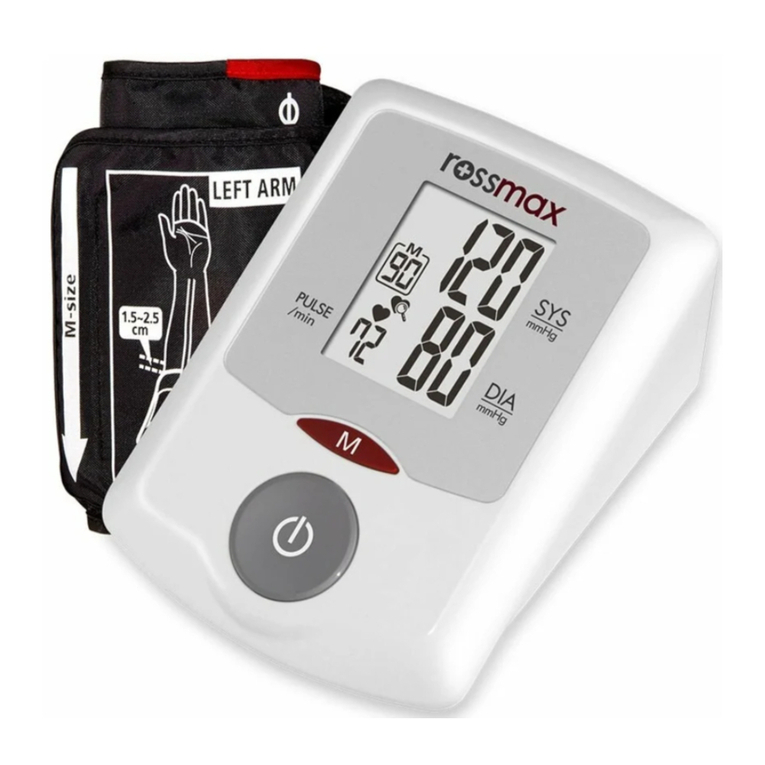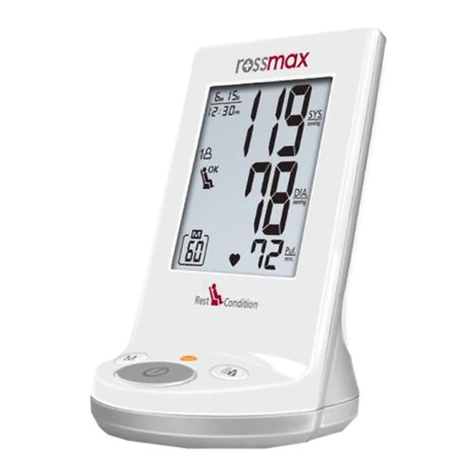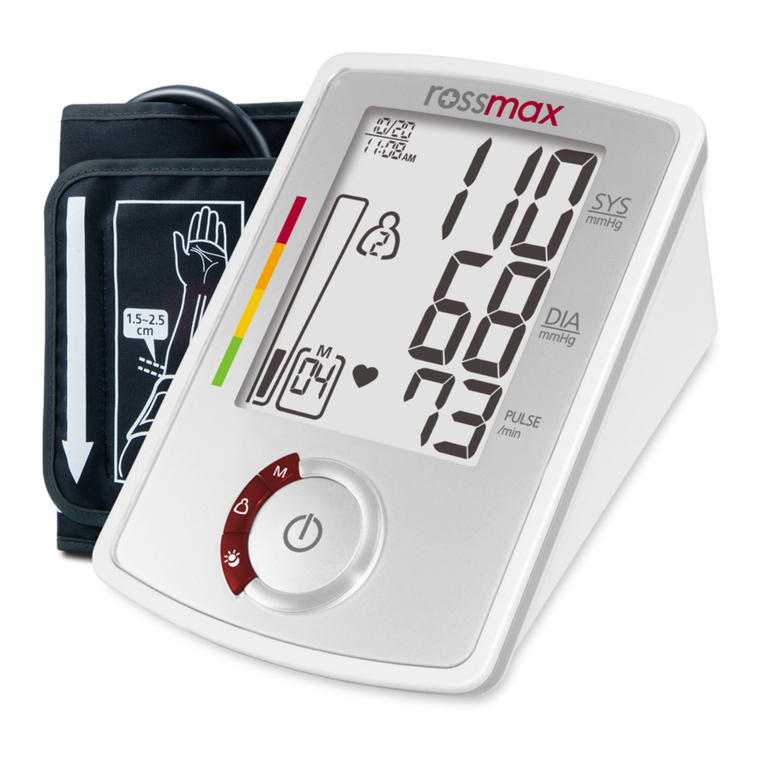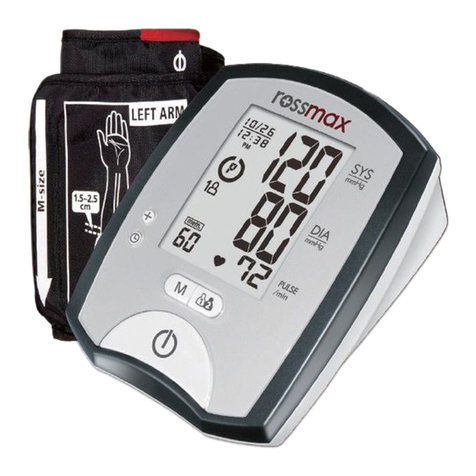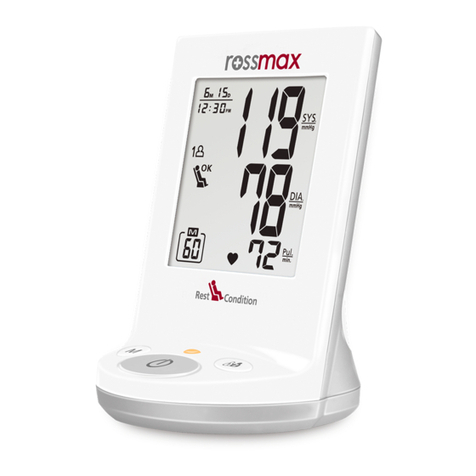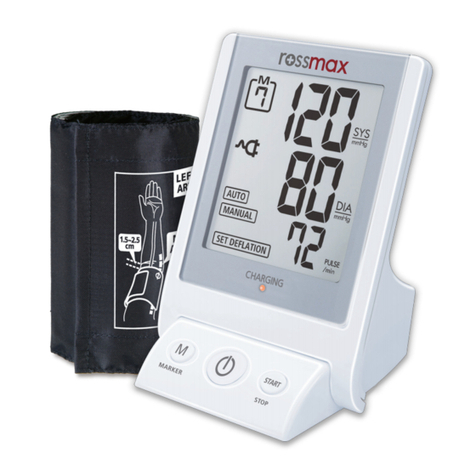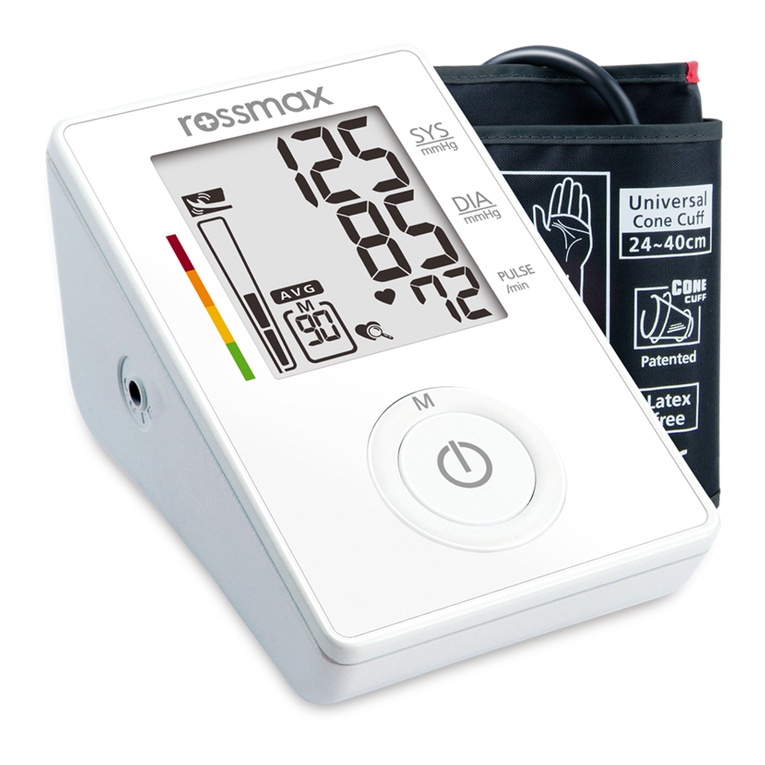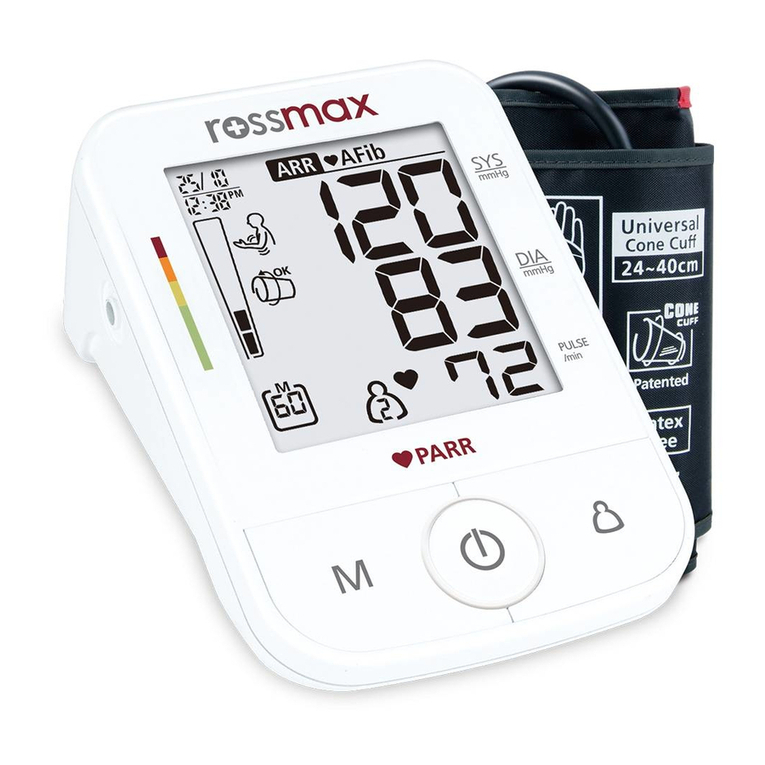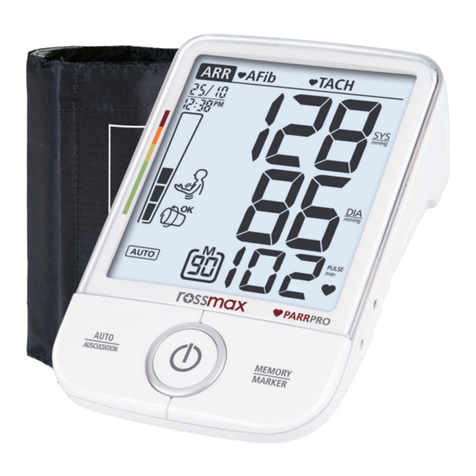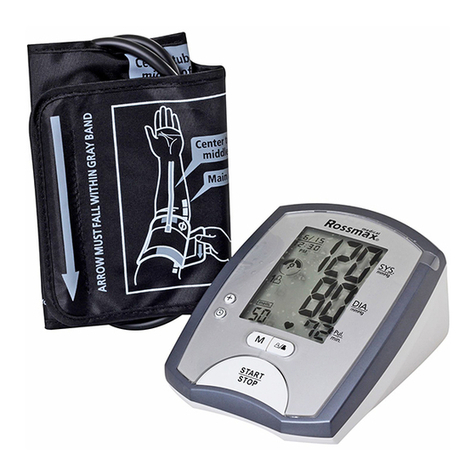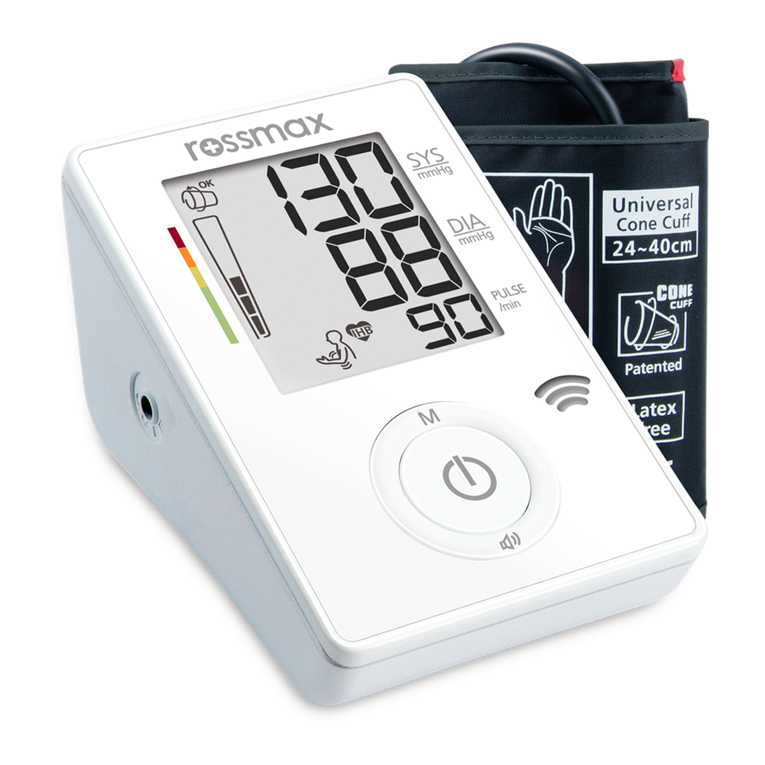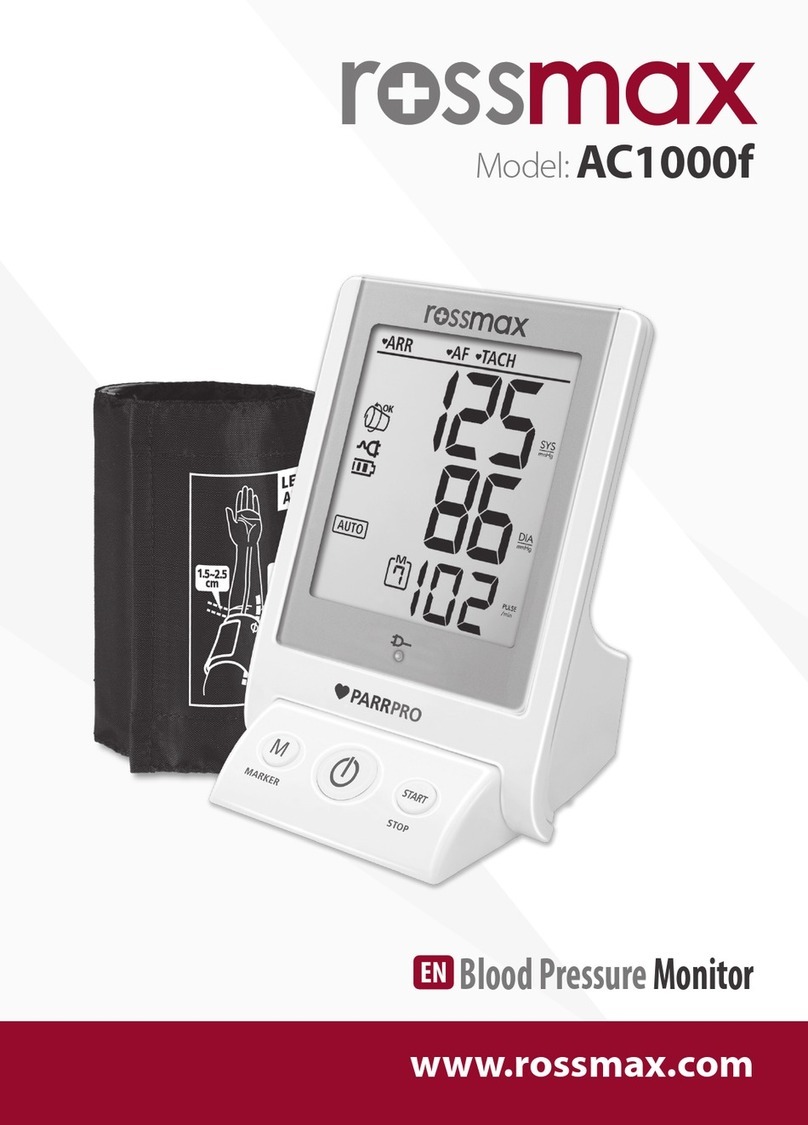10 11
Tachycardia Detection (TACH)
A fast heart rate of higher than 100 beats per minute (bpm) in adults.
Unless being caused by physical or mental stress, a tachycardia may be
an indicator for both cardiac (e.g. Coronary heart disease, valvular disor-
der), or extra-cardiac disorders (e.g. hyperthyroidism, fever, hypoxemia),
as well as medication and stimulant substance side effects (e.g. caf-
feine). The unit is able to detect Tachycardia (TACH). The ARR and TACH
icons ( ) are displayed right after the measurement if tachycardia
has been detected.
Note: It is strongly recommended, that you consult your physician, if
either the TACH icon occurs newly for several times, or, if your
TACH is known to your doctor, but the incidence of TACH read-
ings changes over time. Your doctor will then be able to provide
all required medical test and possible therapeutic procedures.
Premature Contraction Detection (PC)
Extra abnormal heartbeats generated in irregular excitation sites of your
heart, either in the atria (PAC), the ventricle (PVC) or the cardiac conduc-
tion nodes (PNC). These extra beats may disrupt your regular rhythm,
they may come in early or cause a signicant pauses regarding your per-
ceivable pulse. This is called palpitations, which can be felt in your chest.
They may occur as isolated, single events, as a series of irregular pulses
or can be distributed all over your pulse beats. If they are not related to
mental stress, or acute demanding physical load, they may be a marker
for a multitude of cardiac disorders. Some of these disorders go along
with an elevated risk prole for ischemic events, either in the heart (e,g,
coronary heart disease) or outside the heart, e.g. an elevated risk for a
stroke. Some PCs may indicate on valvular or myocardial disorders and
become very important if a myocarditis (infection of the heart muscle)
is suspected. This unit is able to detect premature contractions (
). The ARR and PC icons are displayed right after the measurement if
premature contractions have been detected.
Atrial brillation most often initially occurs with temporary periods of
arrhythmia and may progress to a permanent state of this disorder in
the course of time. No matter, whether you intent to safeguard yourself
from an undetected AF(AFib) state, or you measure during an ongoing
period of active atrial brillation, or you measure in between periods
of AF(AFib), the PARR technology can be applied at any of these condi-
tions. This unit is able to detect Atrial brillation (AF, AFib). The ARR and
AF(AFib) icons ( ) are displayed right after the measurement if Atrial
Fibrillation was detected.
Note: It is strongly recommended, that you consult your physician, if
either the AF(AFib) icon occurs newly for several times, or, if your
AF(AFib) is known to your doctor, but the incidence of AF(AFib)
readings changes over time. Your doctor will then be able to pro-
vide all required medical test and possible therapeutic procedures.
Note: The presence of a cardiac pacemaker may impair the AF(AFib)
detection by PARR.
Note: It is strongly recommended, that you consult your physician, if
either the PC icon occurs newly for several times, or, if your PC is
known to your doctor, but the incidence of PC readings changes
over time. Your doctor will then be able to provide all required
medical test and possible therapeutic procedures.
Bradycardia Detection (BRAD)
A slow heart rate of less than 55 beats per minute (bpm) in adults.
Unless not genetically determined or subsequent to a high cardiac en-
durance training adaptation, bradycardia may be related to multitude
of cardiac disorders (e.g. valvular heart disease, heart failure) or extra-
cardiac disorders (e.g. hypothyroidism, electrolyte imbalance) or medica-
tions (e.g. beta-receptor blocker). This unit is able to detect Bradycardia
(BRAD). The ARR and BRAD icons ( ) are displayed right after the
measurement if bradycardia was detected.
Note: It is strongly recommended, that you consult your physician, if
either the BRAD icon occurs newly for several times, or, if your
BRAD is known to your doctor, but the incidence of BRAD read-
ings changes over time. Your doctor will then be able to provide
all required medical test and possible therapeutic procedures.
